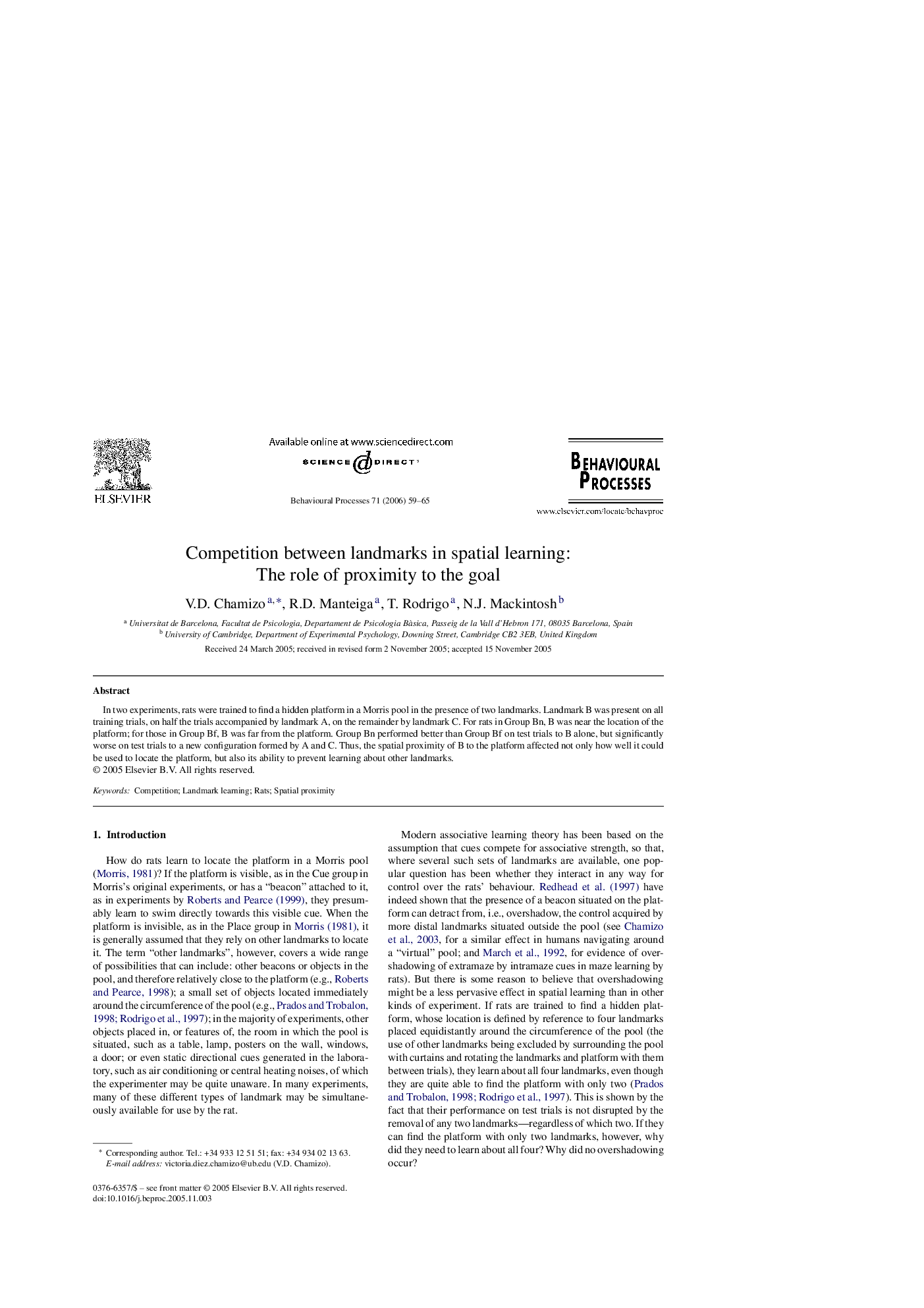| Article ID | Journal | Published Year | Pages | File Type |
|---|---|---|---|---|
| 2428045 | Behavioural Processes | 2006 | 7 Pages |
Abstract
In two experiments, rats were trained to find a hidden platform in a Morris pool in the presence of two landmarks. Landmark B was present on all training trials, on half the trials accompanied by landmark A, on the remainder by landmark C. For rats in Group Bn, B was near the location of the platform; for those in Group Bf, B was far from the platform. Group Bn performed better than Group Bf on test trials to B alone, but significantly worse on test trials to a new configuration formed by A and C. Thus, the spatial proximity of B to the platform affected not only how well it could be used to locate the platform, but also its ability to prevent learning about other landmarks.
Related Topics
Life Sciences
Agricultural and Biological Sciences
Animal Science and Zoology
Authors
V.D. Chamizo, R.D. Manteiga, T. Rodrigo, N.J. Mackintosh,
